In 2016, Denver declared its aspiration to be a city where zero people die or are injured in traffic crashes on our streets. Becoming that crashless city requires changing our streets, fast. In the name of safety and comfort, the city has taken to using flex posts along with new signage, paint, and rubber curbs on some of Denver’s most dangerous streets along with some of Denver’s quieter neighborhood streets. These tools are cheap, useful, and effective.
But regarding the use of plastic bollards, sold by manufacturers as “flex posts,” how many times have we heard from detractors: “they’re ugly,” or “distracting.” For too long safe street advocates have conceded this point, and under the guise of aesthetics, defenders of the car-centric status quo have seemingly found a defensible reason for why they oppose flex posts. In an email to myself and other advocates, the Director of DOTI herself seems to be listening, naming “aesthetics” as a top reason for the removal of flex posts in a recent bike lane dispute. This is a bad look. Advocates care about Denver’s beauty, too. So aesthetically, we should come to flex posts’ defense.
No one enjoys the experience of being hurt, nor does seeing other people injured make onlookers happy. The injured, unlucky victims of traffic violence are deprived of aesthetic enjoyment while they lay injured or dying—for the uninvolved, even the sound of sirens shatters the peaceful aesthetic for several blocks in every direction. And Denverites using the street after a traffic crash can tell that something ugly has taken place. Out of their extensive archives, safe streets advocates Rob Toftness (whose photos are featured on this post) and Alejandra Castañeda shared dozens of pictures with me of property damage, crash debris, and vehicle parts left on sidewalks, streets, tree lawns, and on patios of private businesses. Compared aesthetically to flex posts, is it beautiful to have a streetscape strewn with debris and damaged property? Do passersby prefer a network of crash-prone streets littered with left-behind fenders and broken glass? The aesthetic of the status quo is garbage, personal injury, and the flashing lights of first-responders constantly attending to the wounded and the dead.
But flex posts don’t just improve the aesthetic experience of the high-injury network, the unloved arteries circulating traffic in our city. Some streets are tree-lined, quiet, and currently calm. So why put flex posts on streets like Marion Street Parkway, 7th Avenue, Kearney or Krameria Streets? Because flex posts are meant to be visible. They mean to show cyclists and those outside of cars that this is a street designed not to be overrun, neglected, or shoe-horned into serving new users with the same-old, crash-prone street design. If we direct new users to these local streets, saying “It’s not safe to bike down 6th or 8th Avenues,” don’t we owe them the courtesy of convincing them they are safe on this new path of travel? No matter how quiet and calm the street already was, the status quo looms. Stop signs can be confusingly sequenced, cars parked too close to intersections for people crossing to see past, and wide expanses of asphalt give room to zoom for impatient drivers—in this context, the flex post aims to improve the street, not to obstruct it. For non-drivers using these quiet streets, directed to use them rather than the street out front of their house, flex posts are supposed to be attractive. They assist, they help the new to find the way. Studying cyclist usage before and after these bikeway installations shows that this use of flex posts and other interventions is succeeding.
Obstruction and distraction are often the aesthetic mode of complaint for flex posts on this street. Despite the slender, low profile, they are “blocking” people’s view. They are hyper-visible, visual distracting, they block the natural beauty, they are not historic, they look cheap in front of some of Denver’s most expensive homes, etc. These aesthetic complaints again neglect to consider the status quo, where nearly every street in every neighborhood is lined on either side by vehicles that in 2025 are on significantly bigger than vehicles even 10 years ago. Drivers of these larger, taller vehicles see less of what’s directly in front of them—that’s obstructing the view! And when those driving larger vehicles hit another vehicle or a vulnerable road user, they are more likely to be critically injured or killed, ruining an aesthetic experience of the street. Drivers behind the windshield complaining only about lightweight plastic posts are missing the obvious.
A city full of crashes results in a city full of dinged-up, scraped, and damaged vehicles. Repairing these cars takes money, and the older a car is, the more likely it’s a conventional, gas-powered car. The use of gas-powered vehicles contributes to climate change, localized air pollution, and urban noise. If the sight or sound of a junker out front of your house makes you angry, you’ll be disproportionately benefited by the reduction in crashes and shift in mode of travel that the city is attempting to engineer on every street, which keeps money in the pocket of those who would otherwise be victimized and forced to spend on medical expenses, car repairs, and might lose wages in the process. Flex posts are just one tool in this engineering toolbox. But as I hope I have communicated, they are a valuable addition to the street, and a better use of the space than the a car sitting unused, gathering rust, or spewing fumes into your home through an open window.
Considered aesthetically, reducing crashes by adding flex posts to our streets makes Denver more beautiful. Your street, now compared to 10 years ago, has been made nicer by the tools the City has, until recently, eagerly used. So don’t fall for the distraction, or indulge in the “ugly” talk when someone who is fine with the deadly status quo argues against using flex posts. On this, we ought not to be flexible.


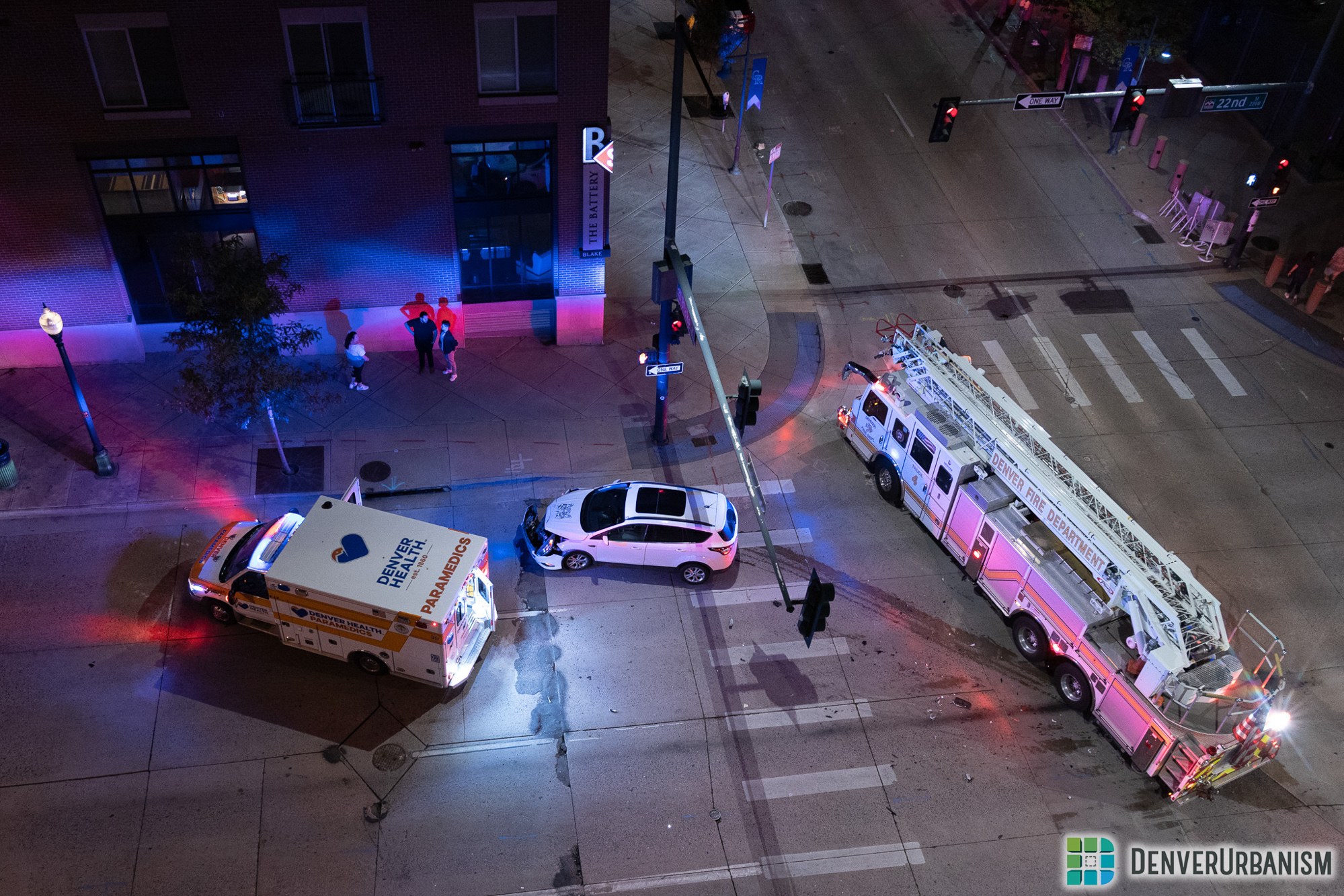
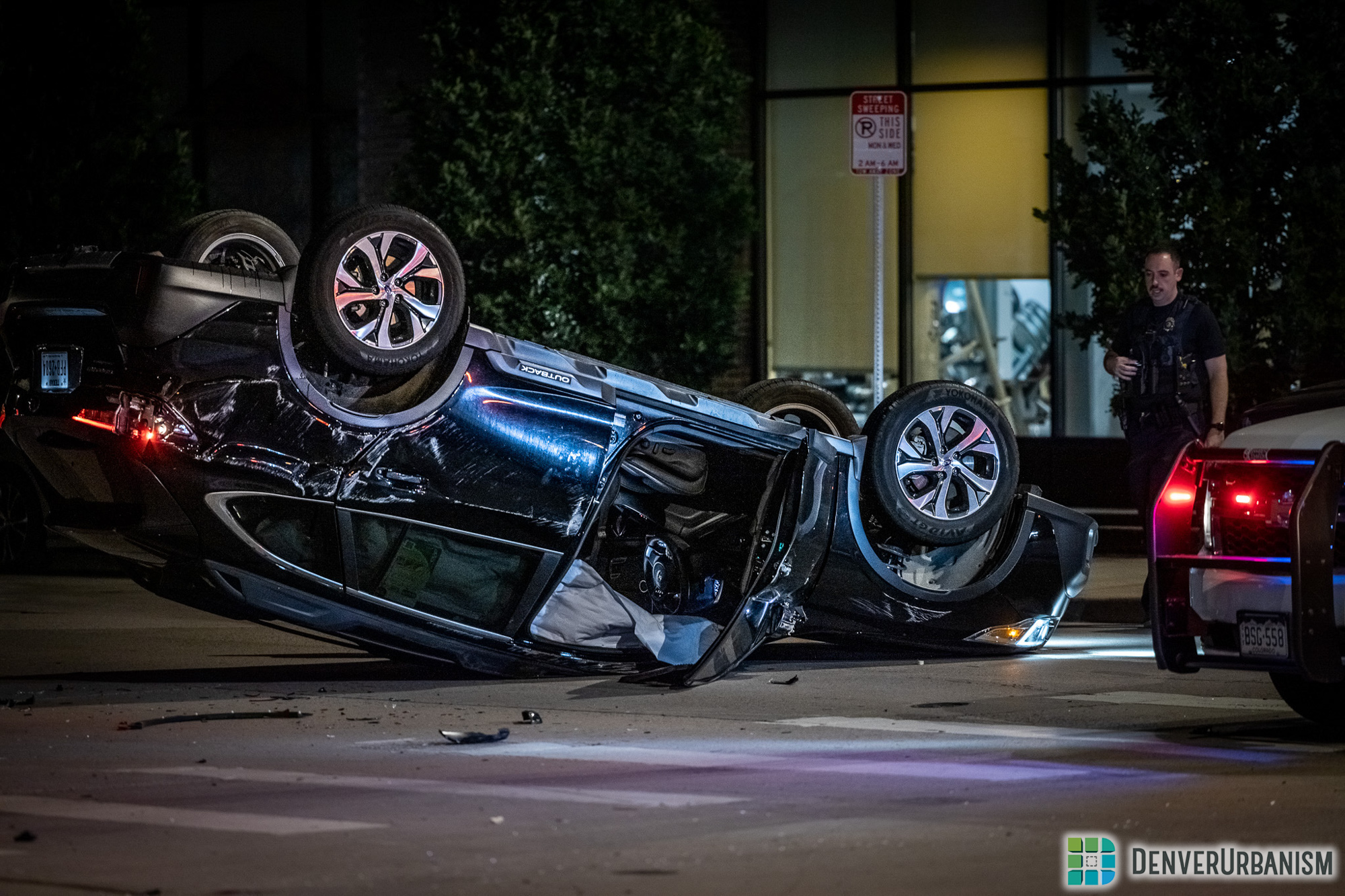
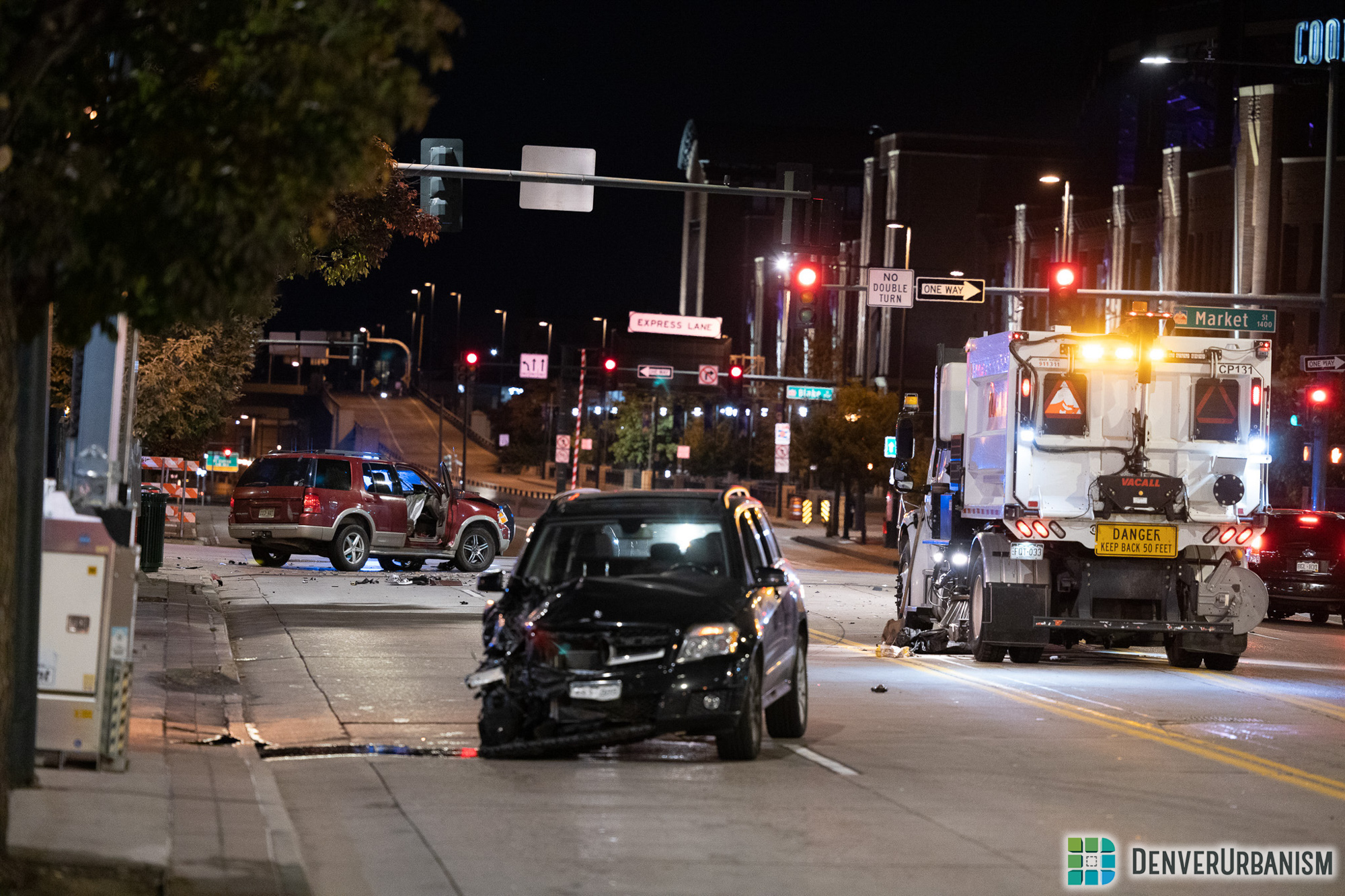
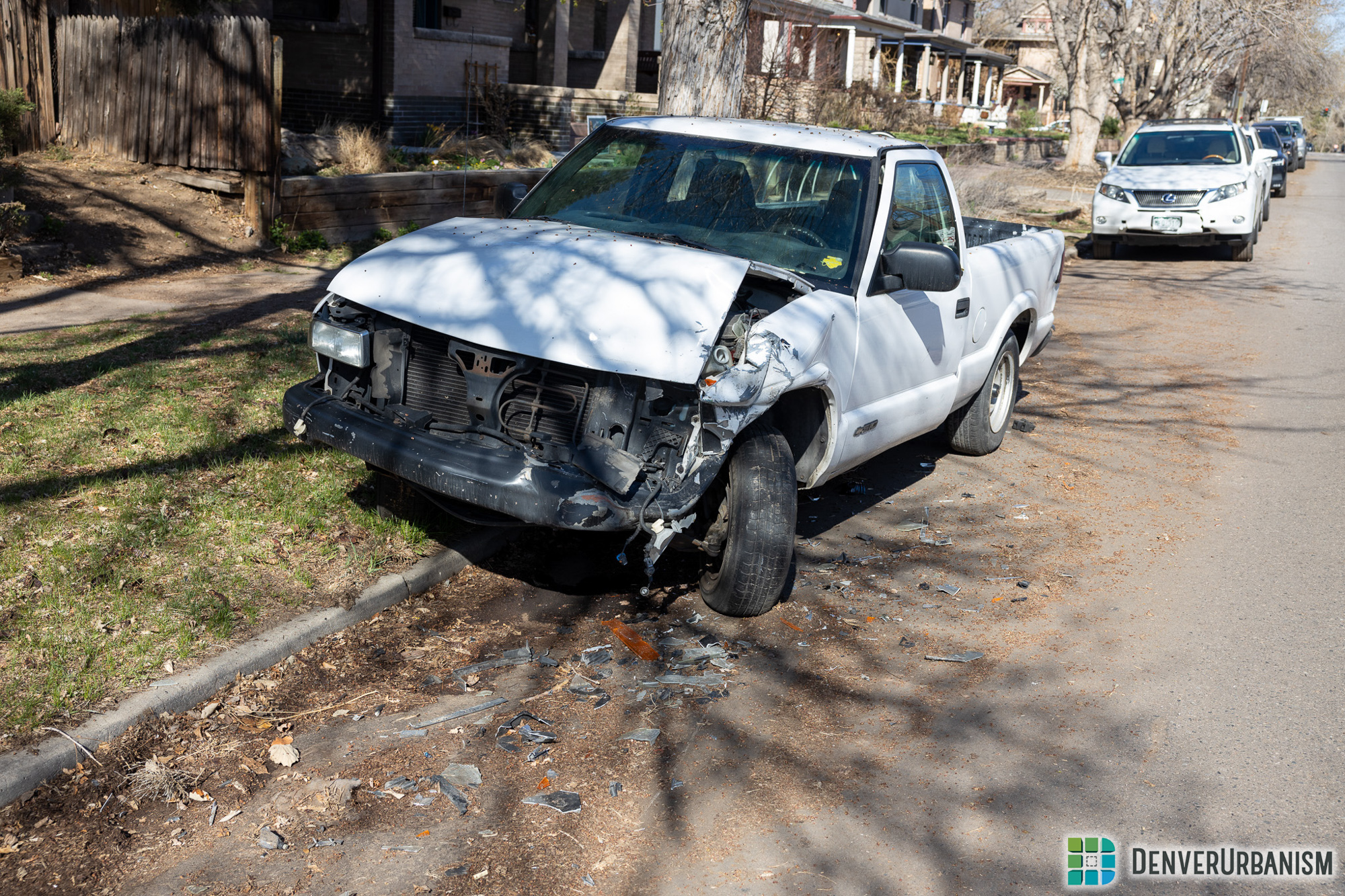
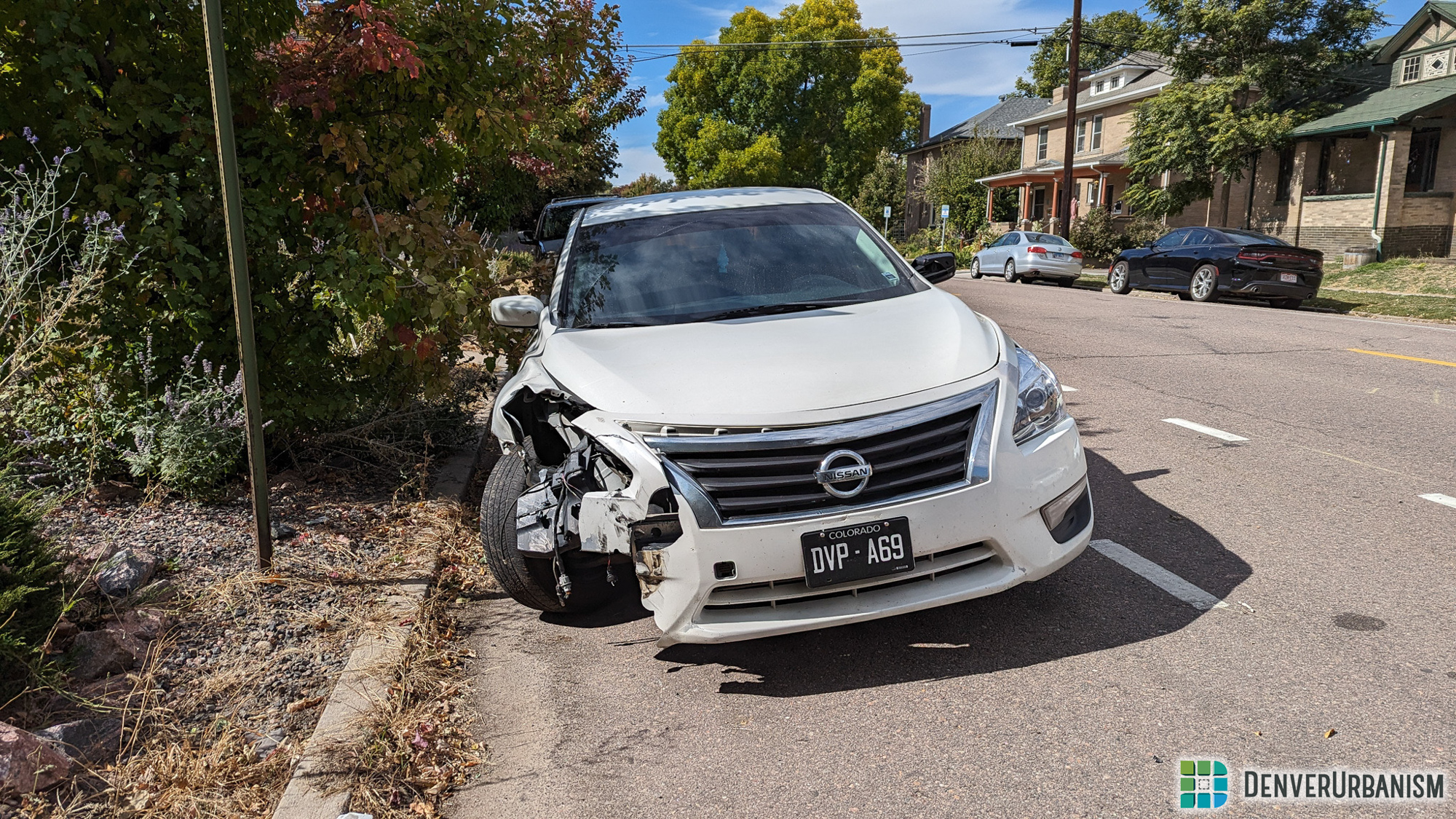
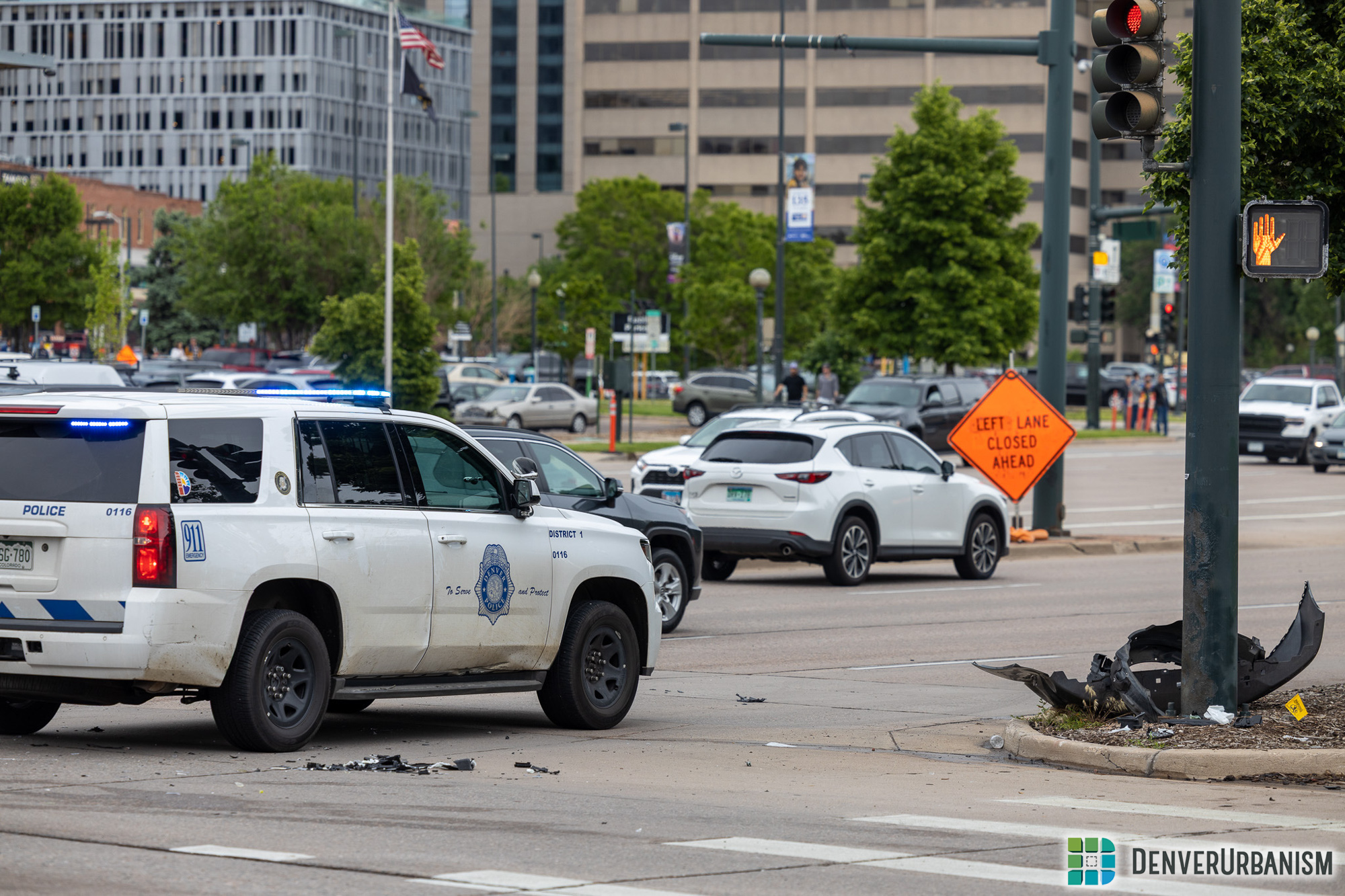
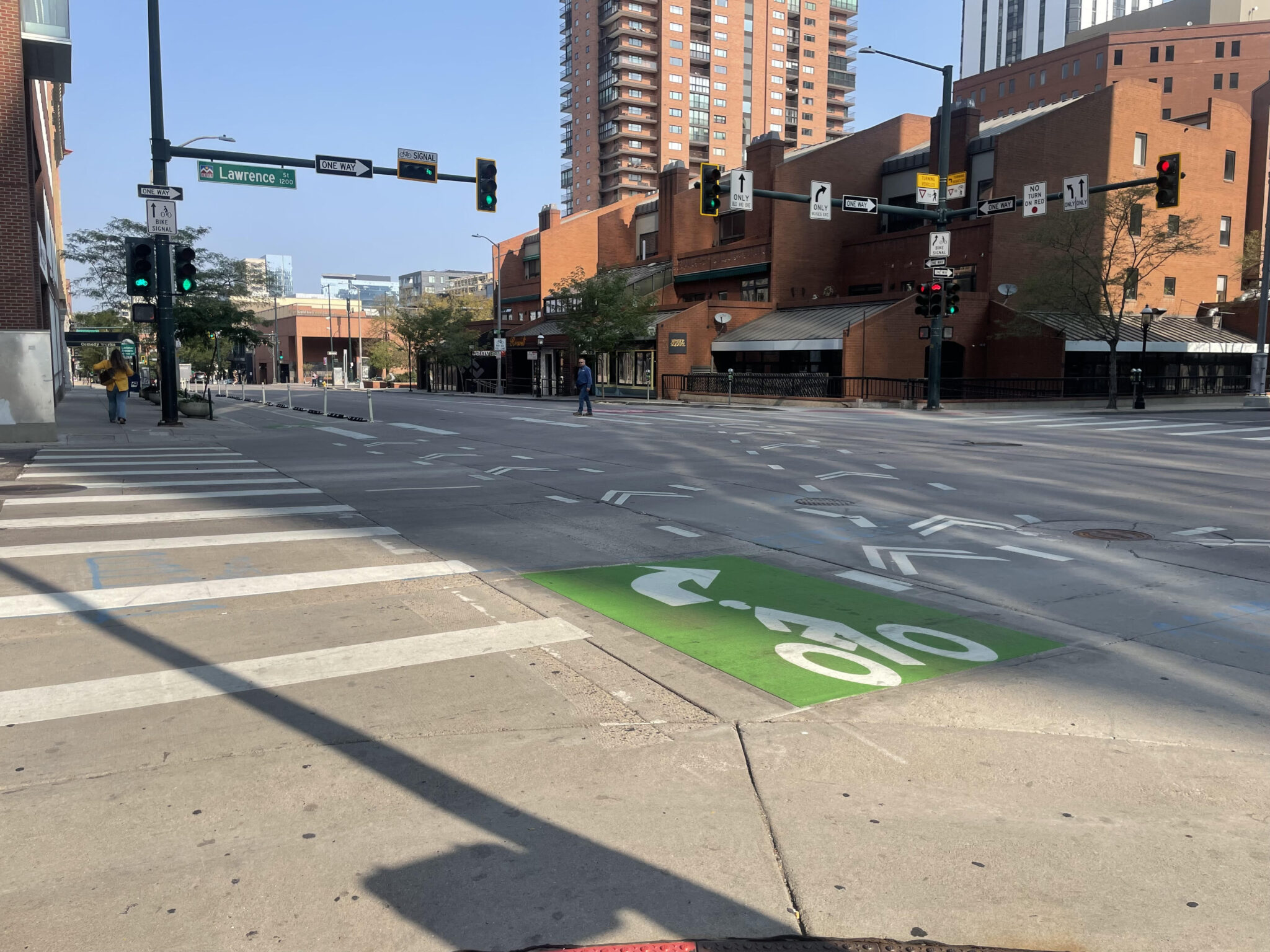








I think flex posts would be a moot point if cities just invested in extending the curb and incorporating a bike like adjacent to the pedestrian sidewalk, which is elevated above the street and painted to identify it as dedicated for bikes, similar to what was installed on Brighton Blvd. It would benefit a few things:
1. Extending curbs will decrease the width of the road and decrease the speed that motorists travel through the city.
2. Bikers would be travelling at an elevated height from the street, which means that they are more visible to motorists.
3. Bikers would be travelling along the passenger side of parked cars, which is safer than passing along the driver’s side of cars, in order to avoid doors opening. In addition, they’d be several yards further away from moving cars, which inherently means a safer biking experience.
4. Current flex posts and bollards create catch-all crevices that collect litter, dust, and debris, which makes it tough to keep clean.
5. Extending curbs would represent a “permanent” investment to bike safety, while flex posts are seen as “temporary”.
6. Extending curbs would also have the indirect benefit of widening the sidewalk and allow for more movement of pedestrians along with opportunities to create a beautiful streetscape with benches, trees, floral beds, etc..
7. Parking would actually become easier for motorists, since they wouldn’t have to navigate flex posts, but rather park adjacent to the curb.
Yeah – making infrastructure improvements would be more expensive than bollards and flex posts, but it would be for a longer duration and I believe would be more wildly accepted and appreciated by the public. Plus, I think it would encourage even more people to use their bikes. I’d invest in a few corridors and then make that the example of an ideal bike lane, so that people will learn to love it, before expanding it further.
Flex posts are peacocks, and ugly ones. I say this not to argue against safety measures for vulnerable road users, but for better ones: the city should be installing metal bollards instead. Flex posts are at best a temporary solution which only partially solve the problem. As average vehicle weight continues to grow, their benefit is reduced to simply being a more visual indicator than a white line and green lane paint. For many drivers that doesn’t matter at all because they are looking down at their phones. Drivers need to be threatened with potential damage to their vehicles for not paying attention to where they are driving and flex posts are not much of an inconvenience. I’ve seen plenty of delivery trucks simply park over top of them.